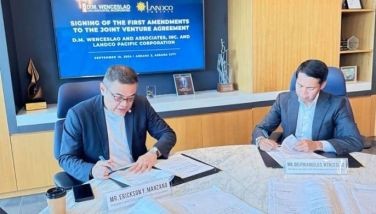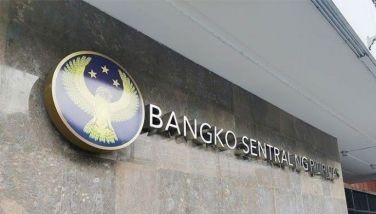Seaweed bath soap set for commercialization
LOS BAÑOS, Laguna, Philippines – A bath soap made from low-grade seaweed is set for commercialization initially at the community level.
In the pipeline is a trading program for fisherfolk, teachers, and local government units (LGU) workers to enable them to make the bath soap themselves.
The cleansing product was developed by researcher Rogelio M. Estacio of the Don Mariano Marcos Memorial State University (DMMMSU), a multi-campus institution of higher learning in La Union whose seat of administration is the main campus in Barangay Sapilang, Bacnotan.
Simply called “Seaweed Bath Soap,” it can make a skin healthier, averred Estacio, who presented the results of his research at the 2011 Aquatic Technology Competition and Marketplace (ATCOM) sponsored by the Department of Science and Technology-Philippine Council for Aquatic and Marine Research and Development (DOST-PCAMRD).
PCAMRD, headed by OIC executive director Cesar Pagdilao, is DOST’s agency that coordinates and monitors the National Aquatic Resources Research and Development System (NARRDS) composed of more than a hundred state colleges and universities (SCUs) and R&D agencies and institutions.
The seaweed bath soap contains a protein that helps fight premature aging of skin and maintains skin suppleness, which in turn reduces and softness wrinkles, Estacio said.
It also has betacarotene that promotes slow skin aging and treats acne, irritated skin, and eczema problems.
“The seaweed bath soap gently scrubs away dead skin and other skin impurities caused by environmental pollution, sun exposures, and stresses of everyday life,” the DMMMSU researcher attested in his research report titled “Seaweed Gel Extract Product Formulation and Development.”
By using this soap, a younger skin is exposed. It also stimulates blood circulation,” he added.
In developing the crystalline nature soap, Estacio used locally available, low-grade seaweeds, papaya, atsuete, and coconut oil as main ingredients. The process of making the soap involves simple, easy-to-adopt steps.
In the Ilocos Region, Estacio said, seaweeds such as sargassum, eucheuma, and gracilaria are abundant.
Sargassum, for instance, is usually washed in large quantity by the sea to beaches or is floating near shore. It is generally ignored by coastal dwellers and regarded as waste in seaside communities.
Estacio said seaweeds are rich in vitamins and minerals, especially potassium, calcium, iodine, magnesium, phosperous, iron, zinc, and manganese.
Papaya extract is known as an effective skin whitener. Papaya contains vitamins A, which benefits the skin by increasing the rate of new cell formation. It also balances and regulates skin firmness and tones and improves smoothness.
Atsuete, a plant common in the Philippines, contains compounds and elements for the homegenous color of the skin.
“There is a wide prospective market of the technology because of its affordability. It is now recognized among the faculty and staff of DMMMSU,” Estacio reported.
- Latest
- Trending































